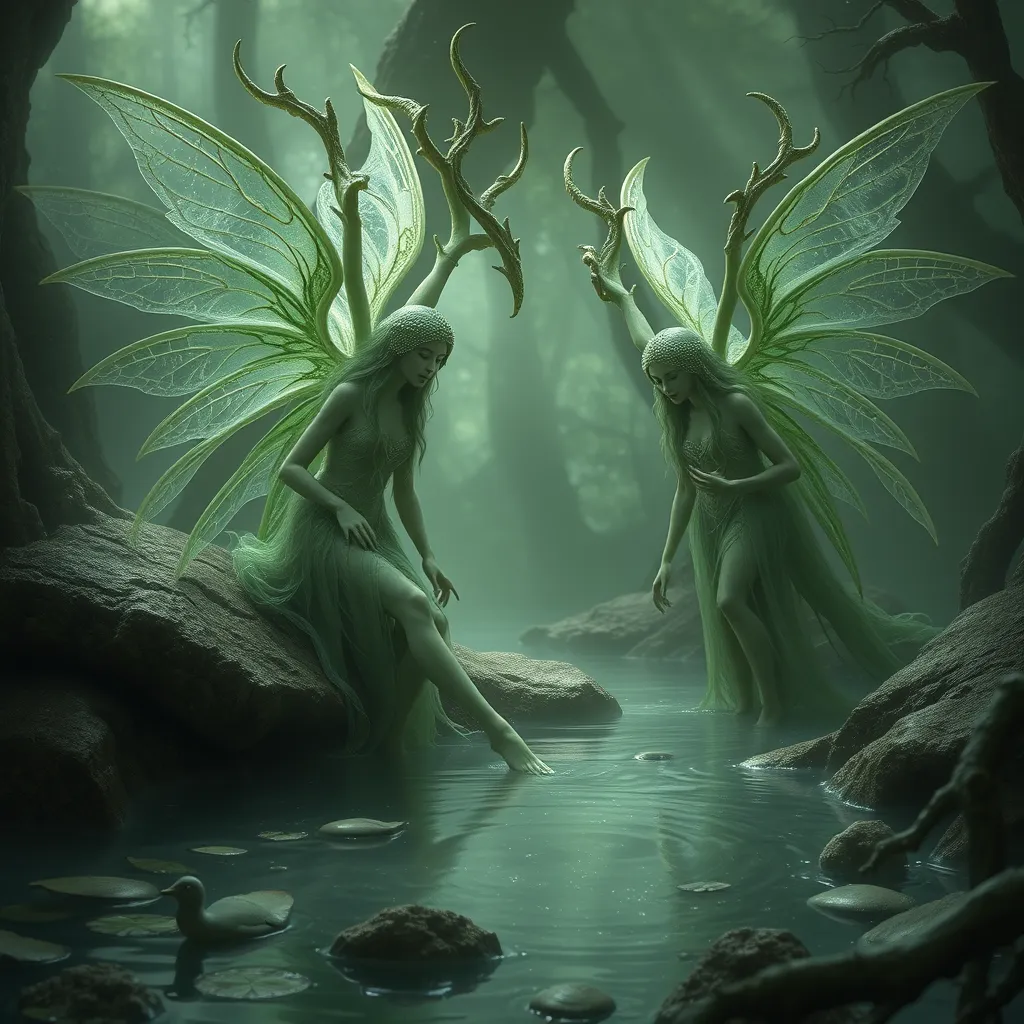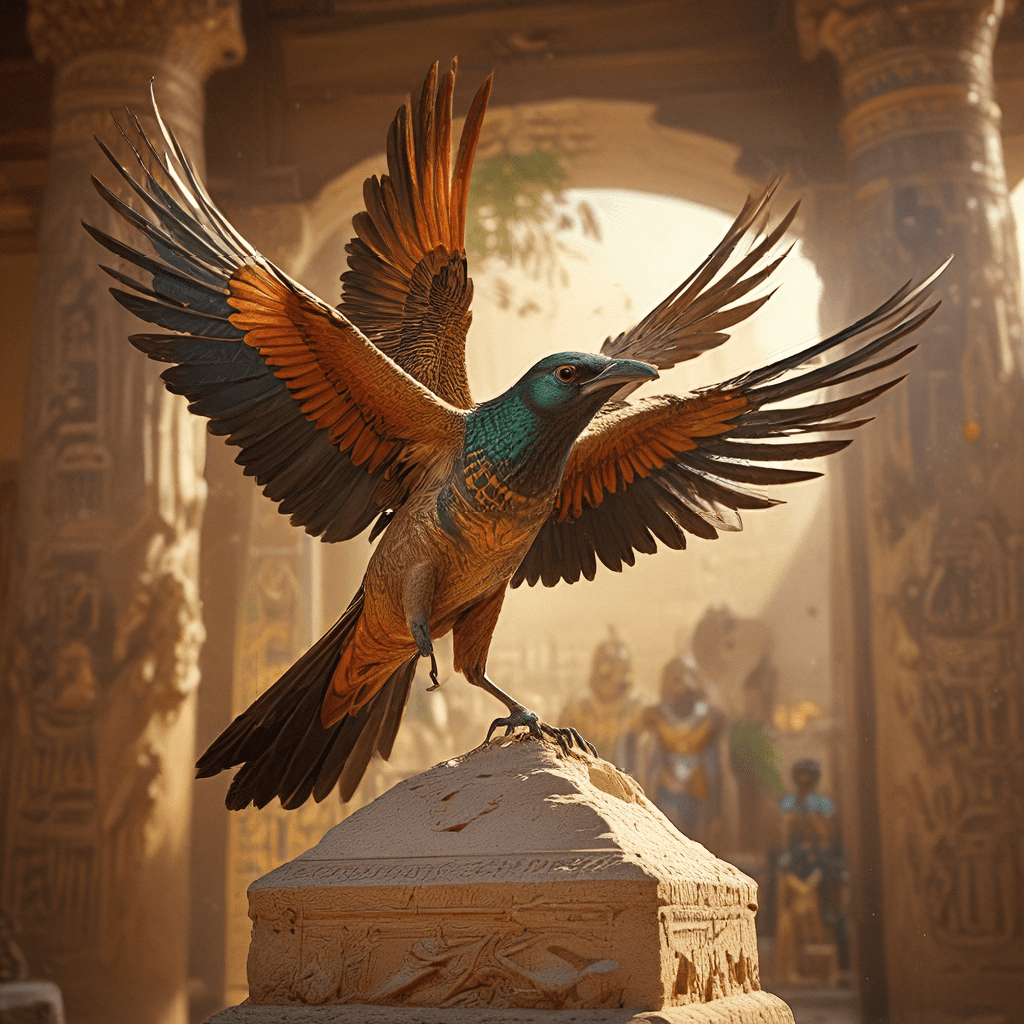The Nymphs of the Spring: Exploring the Lore of the Hamadryad and the Oread
I. Introduction
Nymphs in Greek mythology are often depicted as beautiful maidens closely associated with various natural elements. They embody the spirit of the natural world and are considered lesser deities, serving as guardians of specific locations, such as rivers, springs, mountains, and forests. Among the most enchanting types of nymphs are the Hamadryads and the Oreads, each with their unique characteristics and significance.
The Hamadryads are tree nymphs, intrinsically linked to the forests they inhabit, while the Oreads are mountain nymphs, representing the rugged beauty of highlands and hills. This article delves into the fascinating lore surrounding these nymphs, exploring their origins, relationships with nature, and the rich tapestry of myths that feature them.
Understanding the significance of the Hamadryads and Oreads not only enriches our knowledge of Greek mythology but also highlights the connection between humanity and the natural world, a theme that resonates throughout history.
II. The Hamadryads: Guardians of Trees
A. Origin and characteristics of the Hamadryads
The Hamadryads are often considered to be the spirits of individual trees. According to myth, each Hamadryad is born and dies with the tree they are bound to. They are depicted as beautiful young women, embodying the essence and beauty of the forest.
B. Relationship with specific trees and nature
Hamadryads are closely tied to oak, ash, and other trees, and their well-being is directly linked to the health of their tree. If a tree is harmed or cut down, the Hamadryad associated with it may suffer or even perish.
C. The bond between Hamadryads and their trees: Life and death connection
This profound connection symbolizes the fragility of nature. The Hamadryads serve as a reminder of the importance of trees and forests in maintaining the balance of the ecosystem.
III. The Oreads: Nymphs of the Mountains
A. Definition and traits of the Oreads
The Oreads are mountain nymphs, often depicted as graceful and agile, embodying the spirit of the mountains. They are associated with the rocky terrains and steep cliffs of the highlands.
B. Habitat and geographical distribution of Oreads
Oreads are commonly found in mountainous regions throughout ancient Greece, particularly in areas like Olympus, Parnassus, and the rugged landscapes of Thessaly.
C. Connection to the natural landscape and wildlife
These nymphs are believed to have a close affinity with wildlife, often depicted in harmony with animals that inhabit their mountainous domains, symbolizing the interconnectedness of all living beings.
IV. Mythological Tales and Legends
A. Famous myths involving Hamadryads
1. Relationships with heroes and mortals
One of the most famous tales involving a Hamadryad is the story of Dryope, who was transformed into a tree after accidentally harming a nymph. Her story illustrates the deep bond between humans and nature and the consequences of disrespecting it.
2. Tales of love, loss, and transformation
Hamadryads often appear in stories of love, such as the tale of the hero Theseus, who fell in love with a Hamadryad named Phyllis. Her tale ends in tragedy, showcasing the themes of love and loss that permeate Greek mythology.
B. Notable stories of the Oreads
1. Adventures and interactions with gods and heroes
The Oreads are frequently depicted as companions to gods and heroes. For instance, they are often seen accompanying Artemis, the goddess of the hunt, emphasizing their role as protectors of the wilderness.
2. Symbolism and moral lessons in Oread myths
Many Oread myths carry moral lessons about the importance of respecting nature and the consequences of hubris. Their stories often serve as cautionary tales, reminding mortals of their place within the natural order.
V. Symbolism and Cultural Significance
A. The role of Hamadryads in representing nature’s fragility
The Hamadryads symbolize the delicate balance of nature. Their connection to trees reflects the importance of conservation and the need to protect our natural resources.
B. Oreads as symbols of endurance and resilience
Oreads embody the strength and resilience of nature, representing the enduring spirit of the mountains that withstand the test of time.
C. Influence of these nymphs in art, literature, and modern culture
Both Hamadryads and Oreads have left a lasting mark on art and literature, inspiring countless works that celebrate the beauty and mystery of nature. Their images often appear in paintings, poetry, and modern adaptations of ancient myths.
VI. Comparative Analysis
A. Similarities between Hamadryads and Oreads
Both the Hamadryads and the Oreads share common traits as nature spirits, embodying the beauty and essence of their respective environments. They symbolize the interconnectedness of life and the importance of preserving nature.
B. Differences in their characteristics and narratives
While Hamadryads are inherently tied to trees, Oreads are more associated with mountainous terrains and wildlife. Their stories also differ, with Hamadryads often involved in tragic love stories, whereas Oreads partake in adventures with gods and heroes.
C. The broader context of nymphs in mythology
Nymphs, including Hamadryads and Oreads, represent various elements of nature and highlight the ancient Greeks’ reverence for the natural world. They serve as a reminder of the beauty and power of nature, as well as the consequences of human actions on the environment.
VII. Modern Interpretations and Representations
A. The resurgence of interest in nymph mythology in contemporary media
In recent years, there has been a resurgence of interest in nymph mythology through literature, film, and art. Nymphs are often portrayed as symbols of nature and femininity, resonating with modern audiences.
B. Artistic representations of Hamadryads and Oreads in modern culture
Artists today continue to draw inspiration from Hamadryads and Oreads, creating works that reflect their beauty and connection to nature. This is evident in paintings, sculptures, and digital art that celebrate these enchanting figures.
C. Eco-feminism and the relevance of nymphs today
The themes of nymph mythology align with eco-feminism, emphasizing the connection between women’s rights and environmental issues. Nymphs serve as powerful symbols in the contemporary movement for ecological awareness and the protection of the earth.
VIII. Conclusion
In summary, the Hamadryads and Oreads are more than just figures of Greek mythology; they are embodiments of nature’s beauty, fragility, and resilience. Through their stories, we are reminded of the interconnectedness of life and the importance of protecting our natural environment.
The enduring legacy of these nymphs in mythology and culture speaks to the timeless relevance of their tales. As we reflect on their significance, we are encouraged to connect with nature, honoring the ancient stories that continue to inspire and inform our relationship with the world around us.



